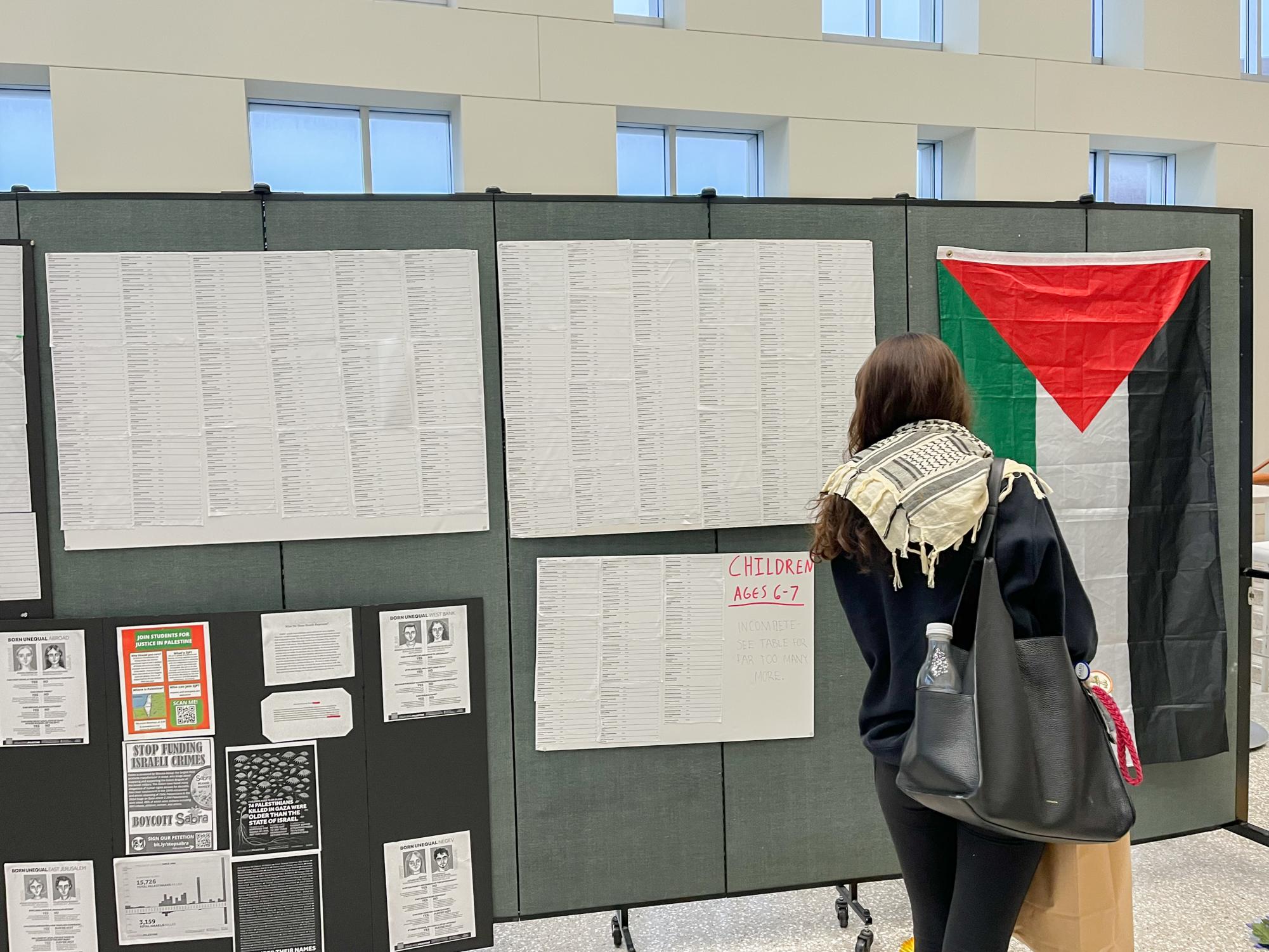As the new semester begins, college campuses are abuzz with the return of students, faculty and guests. We rub sleep from our eyes and try to hang onto our patience in the packed shuttle buses. Classrooms echo with the voices of professors and the halls are crowded, filled with the thudding rhythm of sneakers. The queues to get food are long in the dining halls, evidenced by the snaking lines of impatient people, glued to their phones to pass time.
But, in the end, we sit and eat. We spend time with our classmates and our friends, and soak up new, exciting knowledge from our professors. Outside, the water of the harbor glitters in the sunlight, and the city of Boston twinkles with the glow of its rich history.
There is an unspoken privilege in having distance from tragedy. Over 5,000 miles away, some of the most unspeakable acts of human depravity are occurring — and they don’t seem to have an end in sight. It’s been almost a full year since the start of the current war in the Gaza strip.
After October 7th, a day in which an estimated 1,200 Israelis were killed at the hands of Hamas and 251 were taken hostage, Gaza quickly became a warzone. The world watched as the horrors intensified.
Today, in this very moment, it is undeniable that the ethnic cleansing of Palestinian people is being carried out in Gaza at the hands of Israel’s military, aided by the United States. On the 26th of March, the United Nation’s Special Rapporteur Francesca Albanese proclaimed this to be true, stating that “there are reasonable grounds to believe that the threshold indicating the commission of genocide… has been met.” This assault on the citizens and land is a quite literally squeezing the life out of the occupied territory — and now Gaza is dying right before our eyes.
Gaza is dying because it is being starved. Genocide goes beyond just bodily and psychological harm; it often comes in the form of intentional starvation. Food is scarce in all areas of the occupied territory, with reports from July stating that more than a fifth of the population, or more than 495,000 people, is facing a catastrophic level of food insecurity.
Aid trucks attempting to carry food rations have consistently been blocked, looted and even shot by both members of the Israel Defense Force and far-right Israeli settlers. If the aid is lucky to make it into Gaza, Israeli forces have intentionally bombed multiple cohorts of humanitarian aid workers, hindering the distribution of vital resources. Hundreds of children are acutely malnourished, and parents watch them slowly starve to death in a world where baby milk is scarce, even in hospitals.
Gaza is dying because it is sick. Most of the functioning hospitals or healthcare clinics have been bombed or raided, a consistent target of Israel’s military assault on Gaza’s infrastructure and citizens. This is supposedly justified by the claim that Hamas members are using such locations as shelter — misinformation constantly being refuted by the hospitals’ staff and humans’ rights experts.
Palestinians are left with few options for receiving much needed urgent and long-term healthcare. Pregnant people cannot access prenatal care or give birth in safe and sanitary conditions, and there is little clean water available, affecting parent’s abilities to feed their babies. At the end of July, a polio epidemic was declared, a direct result of the lack of potable water and unhygienic living conditions — and vaccines are just now making their way into the strip.
Gaza is dying because it has been bombed beyond recognition, its homes reduced to rubble and its farmlands desecrated. In Israeli military’s attempts to create a “buffer zone” along the eastern boarder of the strip, the use of bulldozers and explosives has eviscerated neighborhoods, schools and agricultural land, an act that Amnesty International says should be investigated as a war crime.
Over 70% of civilian infrastructure and more than half of Gaza’s farmland has been destroyed by Israel’s insidious attacks. From backyard gardens to acres and acres of lush farmland sustaining crops such as tomatoes, strawberries and olives — with some trees being decades old — Palestinian agriculture will never be the same. Most families have no home to return to if the war ever is to end, and to reconstruct Gaza it could cost an estimated $40-50 billion dollars.
The forms in which death manifests in Gaza are varied, each contributing to one of the worst humanitarian crises the world has ever seen. In America, in Massachusetts and at UMass Boston, we lack the physical proximity to view these depraved acts of war, but that does not absolve us of any responsibility to recognize these horrors.
Over 40,000 people are dead, and thousands more are thought to be buried under the endless rubble that was once vibrant cities and towns. Life has been drained out of the land and taken from the Palestinian people in the name of defense and protection.
Gaza is dying, and its demise is fading out of the world’s perspective. Gaza is dying, and we must continue to call for it to stop, to end, so that perhaps it may begin to heal.
Gaza is dying, and we, especially as students, have both the will and the power to revive what little is left, and lend a hand to support its future growth.


